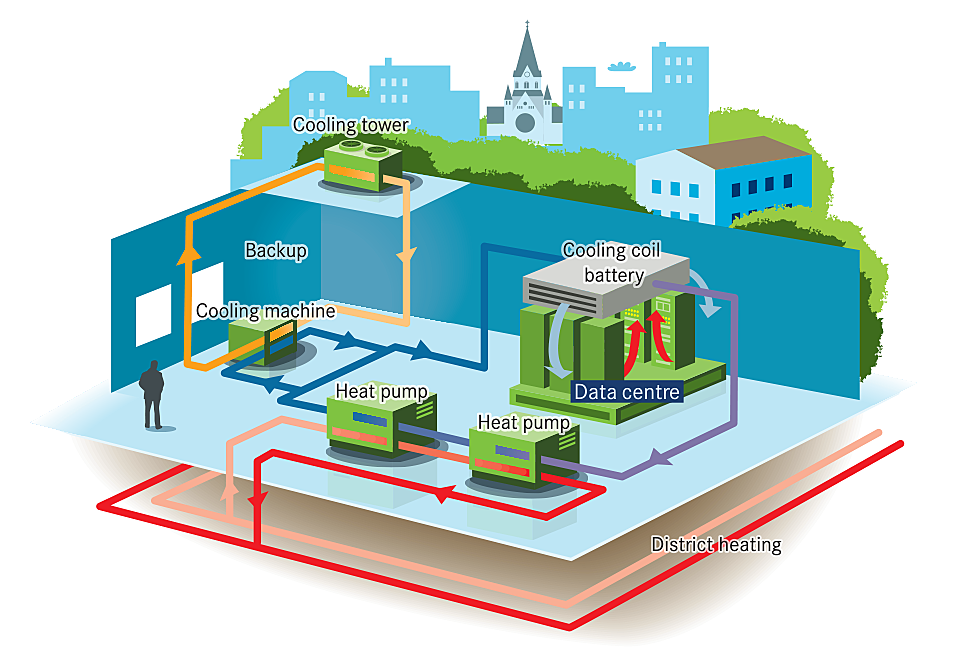Innovative solutions to reduce cooling needs for data centres
As the world’s demand for data continues to expand, the creation of new data centres poses the issue of cooling. Innovative solutions using renewable energy sources and heat recovery are presented here.
All online activity generates data that need to be stored and the world’s demand for data is skyrocketing. One Google search for instance, can activate up to eight data centres in the world [1]. Consequently, there is an increase in the creation of data centres.
Several requirements are needed to create new data centres: sufficient physical space, proximity with the end-user to reduce latency, great power capacity for operation and cooling [2]. Cooling is one of the most expensive and energy-consuming process in data centres, since servers generate a lot of heat and are continuously running year round. Between 30% and 55% of the electric consumption of data centres is used for cooling IT equipment and the average power density of data centres is expected to be multiplied by 8 by 2025 [3].
In order to reduce cooling needs, one solution has been to locate data centres in areas with cooler climates, leading to some unusual and creative location choices.
In a mine in Norway
The Lefdal Mine Data Centre in Norway is one of the largest in Europe. It is also one of the most energy efficient, using cold water from the fjord as a coolant. Its location below sea level eliminates the need for expensive high-capacity pumps to lift the fjord’s water to the cooling system’s heat exchangers.
In the Swedish Arctic circle
Facebook has set up a data centre in Lulea, in the Swedish Arctic circle. The freezing air outside is used as a natural coolant for the servers. The facility is powered by a dozen surrounding hydroelectric stations [4].
In some cases, the excess heat generated by servers is used for district heating.
Under a cathedral in Finland
A data centre has been built in a large network of granite caves beneath the Helsinki's Uspenski Cathedral. In addition to the low temperatures in the caves, further cooling is provided using Baltic sea water. Furthermore, the excess heat generated by the servers is recovered to provide heating for 500 homes in the neighbourhood [5].
In an old nuclear bunker in Sweden
The Bahnhof Pionen data centre is located 30 meters underground in Södermalm in Stockholm. Excess heat from the cooling facility is recovered and sold to the city of Stockholm’s district heating network [6].

Other more ambitious options are still on the research stage.
Underwater
Microsoft has deployed a research project for underwater data centres called Natick. Off the coast of Scotland, Natick Northern Isles has been functioning for a year. The Natick data centre is powered by nearby renewable energy provided by off-shore wave and tide, as well as on-shore wind and solar. Sea water is used as a natural coolant. Despite the benefits of this project, the long-term environmental impact of excess heat from servers released underwater will have to be monitored. [7]
Sources:
[1] https://techwireasia.com/2020/05/why-data-center-cooling-is-now-a-20b-industry/
[3] The role of refrigeration in the global economy. 38th Informatory Note on Refrigeration Technologies. IIR, June 2019.
[4] https://www.euronews.com/2015/11/24/facebook-boasts-green-data-centre-in-lulea-sweden
[6] https://www.opendistrictheating.com/case/bahnhof-data-centre-pionen/
[4] https://www.verdict.co.uk/microsoft-underwater-data-centres/
